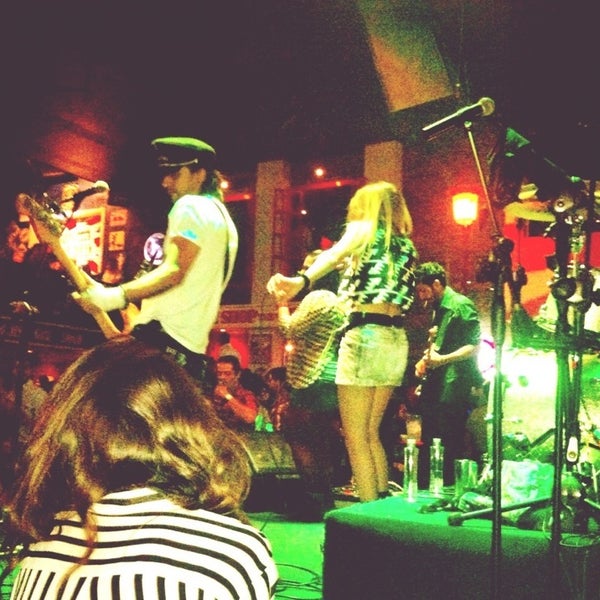

He holstered the machete and handed me a rag to mop at the blood. The truth is that I so quickly bloodied my arm that Ismael took the machete away from me before I turned into a pin cushion. I wish I could tell you how easy it was, how I quickly pruned the towering agave plant and lifted it out of the red volcanic soil, just like Ismael. “ Quizá trescientos.” Three hundred.Īnd then he handed his machete to me. “Which is why we work only six or seven hours a day.”Īnd how many agave plants can you harvest? I asked him.
#Unplugged bar gdl series#
And then he grabbed his machete, made a series of quick downward slashes, lifted out the pina, and trimmed it to its core-all in a couple of minutes. Photo by David Lansing.įrankly, I told Ismael, the work looked incredibly difficult. Ismael Gama, a jimador, harvesting a 100-lb. With deft strokes the men quickly hacked off the barbed spears of the six-foot-tall agave, then used the flat-spade to trim the hundred-pound pineapple shaped heart, the pina, that would be roasted and mashed at the distillery. We watched them for a moment so I could see how it worked. Ismael dove his dirty truck through a muddy field owned by Cuervo, stopping along a row of giant blue agaves where half a dozen other jimadors were working. “He is the best jimador I know,” a jimador being someone who uses a machete and a special flat-edge shovel to harvest the enormous agaves that take 7 to 10 years to grow before they’re ready for the alchemies of fermentation and distillation that will turn them into tequila. A friend of mine, Ana Maria Romero, who knows more about tequila than almost anyone I know, had arranged for me to meet Señor Gama after I’d expressed a desire to see agave being harvested. But then again, this wasn’t something I wanted to miss. And the sky was still a splotchy gray pillow so I was a little surprised when Ismael Gama offered to take me out into the gray-blue agave fields outside the little town of Tequila.

Did I say tequila doesn’t hold up very well after five years? Listen, there are exceptions. Which is exactly what Ismael and I did with a bottle Cuervo Reserva de la Familia, a rare blended tequila that takes several three-year-old anejos and ages them in oak for up to 13 years. In other words, it’s not the sort of thing you want to put away for ten or twenty years open it and drink it. Unlike whisky, tequila doesn’t really get any better sitting around for more than five years (there are some extraordinary exceptions) and it also doesn’t hold up indefinitely in the bottle. Reposado (rested) tequilas can sit in oak barrels for up to one year while the anejos are aged anywhere from one to five years. Not a lot of time, but still, it changes the taste. But they’re not done yet.Īccording to Mexican law, even blanco (white) tequila must be aged for 14-21 days. When you taste that final distillation it is just pure agave. The first distillation tastes petrolly and nasty the third you could almost drink straight (as I’ve said, the more distillations, to refine the rough, low-grade distillate, the better).

This gives you a sort of sweet, honey-colored juice called aguamiel (honey water) which is then combined with yeast and placed in a vat to ferment for a couple of days and then transferred to a copper alambique, just like whisky, where it it distilled at least twice but sometimes three or even four times. Photo by David Lansing.Īfter the agave has been roasted, it’s shredded and mashed in big stainless steel tubs (this is where the factory gets more modern back in the day, they’d dump the roasted agave into a stone pit and a donkey would walk around and around in a circle pulling a large stone wheel to mash the pulp). Roasted agave, which smells like vanilla and tastes like candied yams. And maybe, just maybe, the next time someone blindly serves me nice blanco I’ll be able to sniff it and say, “Ah…from Arandas, I’m sure.” Okay, I tasted about a dozen different tequilas with Ana Maria and I can’t say I ever picked up on the artichoke. A tequila with more of a herbal taste-pepper, mint, artichoke-probably was made with agave grown in the Valle de Tequila.” “That’s because there is more iron in the soil and this makes the agave larger and they produce more sugar. “The flavor of the agave grown around Arandas is sweeter and more intense,” says Ana Maria. And, as you can see, makes for tremendous visuals.īut the highlight of the day was a tequila tasting given by Ana Maria Romero, a tequila master who has developed an “aromatic circle of tequila” for agave heads who not only want to identify the orange blossom in their blanco tequila and the walnut in their reposado, but-from just a sip-can tell you whether the tequila is from Arandas or Teuchitlan.

It’s all kind of hokey, sure, but it’s also kind of fun (helped along by the margaritas they start handing out).


 0 kommentar(er)
0 kommentar(er)
